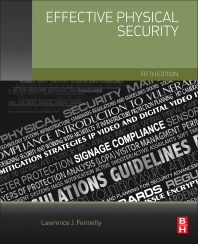Whether it’s battling negative legislation, assuring the collective voice of its members is heard, appointing new leadership to drive the industry into the future or recognizing the successes and contributions of industry leaders, security associations are continually promoting the interests of the security industry. What follows are some of the most recent developments.
CSAA Names New President, Stanley C. Lott Award Winner
Bob Bean, vice chairman and director of Alert Alarm of Hawaii, was named president of CSAA during its annual meeting. Bean, who takes the helm from Ed Bonifas, vice president of Alarm Detection Systems, is the 31st central monitoring professional to hold this position. He will serve in this capacity for the next two years.
“CSAA is delighted to welcome Bob Bean as the new association president,” said CSAA executive vice president Steve Doyle. “Alert Alarm is the largest alarm company in Hawaii, and Bob has hosted many annual meetings over the years. His experience on the board and executive committee will serve CSAA well during this time of considerable challenges from the AHJ community, and as the industry adapts to the ASAP program and the myriad of other technical and educational challenges.”
In addition to serving in various capacities on CSAA’s executive committee over the years, Bean has been chair of the CSAA membership committee, chair of the NRTL promotion Committee, and co-chair of the CSAA long range planning committee.
“His long service to this industry and to CSAA will ensure a steady hand at the helm for years to come,” noted Doyle.
Pam Petrow, president of Vector Security and second vice president of CSAA, received the association’s top honor — the Stanley C. Lott Award.
“Pam has been a tireless supporter of CSAA,” said CSAA immediate past president Ed Bonifas. “She contributed much as a leader on CSAA’s education, and marketing and communications committees. But most notably, she has been instrumental in developing, testing, and implementing the program with APCO that we now call the ASAP project.”
He added, “In fact, in 2009, she was presented with APCO’s highest honor — its President’s Award — the first person outside of the 911 community to win this award.”
Presented to Petrow during CSAA’s Annual Meeting, this award was created to honor the memory of Stanley C. Lott, who served as the president of CSAA from 1985-1987, and who died on March 5, 1989 at the age of 46. Lott was a dedicated leader and a past president of CSAA. In his honor, this CSAA award is presented in highest recognition of a person’s exemplary leadership and support.
SIA Speaks Out Against Government Ethics Ruling
In a letter to the Office of Government Ethics (OGE), the Security Industry Association (SIA), Alexandria, Va., expressed opposition to the proposed OGE amendment limiting gifts from registered lobbyists and lobbying organizations. SIA believes the rule as written will severely limit the ability of federal government employees to participate in certain educational programs that meet the mission of their agencies.
As a provider of such educational programming to federal government employees and industry attendees at SIA conferences and trade shows, SIA is directly impacted by this proceeding.
In its proposed rule, the OGE recognizes that federal government employees — including political appointees — should be able to accept offers of free attendance to ‘substantive events that would provide a legitimate educational or professional development benefit that furthers the interests of an agency.’ However, this exception to the rule does not include trade associations.
“The exclusion of trade associations from that exception discriminates against SIA and a considerable number of trade associations that serve a critical role in virtually every industry,” said SIA’s new chief executive officer, Don Erickson. “Businesses join trade associations to promote common interests, share best practices, receive insightful research, develop voluntary consensus standards, and learn about the latest developments in their industry. Though SIA and many other trade associations may engage in lobbying activities, SIA educational programming is not a lobbying tool or technique.”
SIA’s educational policies closely align with those established by the American Society for Training & Development (ASTD), the world’s largest association dedicated to workplace learning and development professionals.
“We respectfully urge the OGE to rely on the widely-recognized technical expertise of entities like ASTD before proposing requirements that could have far-reaching consequences for government employees and those they serve,” Erickson said.
ESA Joins Government’s Emergency Services Sector Coordinating Council
The U.S. government gave the Electronic Security Association (ESA), Irving, Texas, a choice seat at the table for establishing the direction of Homeland Security as it involves the nation’s emergency service industry.
ESA became a member of the Emergency Services Sector Coordinating Council (ESSCC), which was created by the Department of Homeland Security in 2004 as a vehicle for coordinating the actions and capabilities of the Emergency Services Sector. This includes law enforcement, fire service, search and rescue, medical personnel and other first responders.
ESA’s role will be to represent the leadership of the electronic life safety and security industry within the council, providing general direction to the group and working with other participating members. John Chwat, director of government relations for ESA, will be the association’s representative on the council, and ESA executive director Merlin Guilbeau will serve as the alternate. The group meets twice each year, with occasional conference calls, and members are involved with council initiatives year-round.
The ESSCC is an independent, unfunded coalition of organizations that represent the Emergency Services Sector (ESS). The ESS is defined as the nation’s system of preparedness, response, and recovery elements that form the first line of defense for preventing and mitigating the risk from physical and cyber attacks, and manmade and natural disasters.
The sector consists of emergency services facilities and associated systems, trained and tested personnel, detailed plans and procedures, redundant systems, and mutual-aid agreements that provide life safety and security services across the nation via a first-responder community comprised of federal, state, local, tribal, territorial, and private sector partners.
The ESS is a primary “protector” for other Critical Infrastructure and Key Resources (CIKR) sectors.
Other ESSCC members include the Central Station Alarm Association (CSAA), National Association of State Fire Marshals, International Association of Chiefs of Police, International Association of Emergency Managers, and a number of other high-profile associations.
Municipal Monitoring Still Spreading in Illinois
Through information gained via the Freedom of Information Act, the Illinois Electronic Security Association (IESA) learned that the Village of Lombard, near Chicago, is well down the road to put out a Request for Proposal in order to implement a municipal monitoring program.
Lombard Fire Marshal Chuck Riforgiate recommended the village “move forward with our objectives as they relate to the installation and operation of the Lombard Radio Alarm Network as soon as possible.”
According to the IESA, what fire marshal Riforgiate failed to mention was that the same technology he recommends the village buy on loan — wireless mesh radios — is available in Lombard from the private alarm industry for about a third of the cost cited in the survey. This was explained to him, assistant fire chief Jerry Howell and Village manager David Hulseberg during a July meeting at Lombard Village Hall.
The association asked security companies in Illinois to contact each of its commercial fire alarm customers in Lombard to let them know what is going to be done to them. For a sample letter, contact executive director Kevin Lehan at execdirector@iesa.net.
Lehan highlighted that the private alarm industry needs to communicate to the end user that they can stop this takeover of private industry by speaking to their elected officials.




